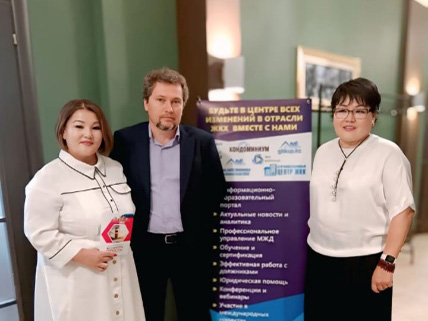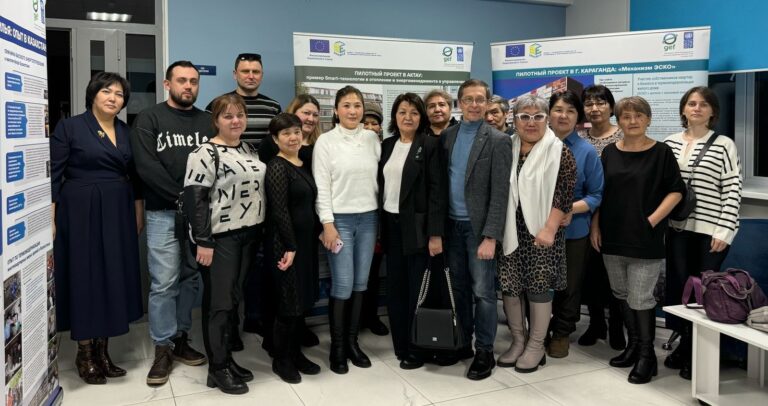Жилищный фонд Казахстана нуждается в комплексной энергетической модернизации (RU•EN)
На фоне роста тарифов на коммунальные услуги и значительного износа жилого фонда Казахстан всё острее сталкивается с необходимостью перехода от точечных ремонтов к системным решениям. Сектор зданий в стране уже потребляет 47% всей энергии, из которых 34% приходится на жилые дома. В «Стратегии достижения углеродной нейтральности Республики Казахстан до 2060 года» (2023 год) особый акцент сделан на модернизацию и повышение энергоэффективности зданий.
Национальный проект «Модернизация энергетического и коммунального секторов (МЭКС)» на 2025–2029 годы фиксирует масштаб проблемы и ставит амбициозные цели: модернизировать не менее 200 субъектов естественных монополий и 30 ТЭЦ, снизить аварийность на 20% и уменьшить износ до ~40%. На проект предусмотрено 13,588 трлн тенге, из которых 6,208 трлн — на энергетику, 6,778 трлн — на коммунальный сектор и 602 млрд — на автоматизацию и приборизацию. Это крупнейший инфраструктурный проект за всю историю независимого Казахстана.
Однако фокус МЭКС смещён в сторону сетей и генерации. Прямых механизмов для комплексной термомодернизации зданий — нет. Это критический пробел: модернизируя ТЭЦ и сети, но не утепляя дома, страна продолжит «отапливать улицу».
Особенно остро проблема проявляется в многоквартирных жилых домах (97% приватизированы). Принятие решения о модернизации зависит от большинства собственников, а их финансовые возможности часто различаются, что осложняет любые инициативы.
Положительным фактором является наличие с 2010 года государственных программ поддержки ремонта МЖД. Однако они не покрывают комплексную модернизацию с внедрением энергоэффективных мероприятий.
Комплексная энергоэффективная модернизация МЖД — это не просто капитальный ремонт. Это полный пересмотр инженерных систем, снижение энергопотребления, повышение комфортности и продление срока службы зданий.
Пилотный проект по комплексной модернизации МЖД, реализованный в Кокшетау в рамках программы GIZ FELICITY II, выходил за рамки технического обновления. Его целью было также создание устойчивой модели взаимодействия между жильцами, управляющими компаниями и местными властями, а также выявление барьеров, которые мешают внедрению энергоэффективных решений.
Инициатива IWO (Инициатива «Жилищное хозяйство в Восточной Европе») отвечала за установление диалога между собственниками, управляющей компанией и акиматом, делая акцент на длительной открытой коммуникации — ключевом условии успешной модернизации.
Ниже представлены материалы, подготовленные в рамках проекта:
- Информационный бюллетень «Комплексная энергоэффективная модернизация: пилотный проект в Кокшетау» — описание мероприятий и материалы для жильцов.
- Брошюра «Предложение по энергетической модернизации МЖД» — перечень энергосберегающих и сопутствующих мероприятий, сравнение состояния дома «до» и «после».
- Исследование мнения жильцов — оценка комфорта, отношения к энергоэффективности, затрат на коммунальные услуги и готовности инвестировать.
- Брошюра «Информационный материал по комплексной энергоэффективной модернизации МЖД» — пакет документов для подготовки собрания собственников: уведомления, программа, описание мероприятий, проектная стоимость, схема финансирования и преимущества модернизации.
Kazakhstan’s housing stock needs comprehensive energy modernization!
With rising utility rates and a deteriorating housing stock, Kazakhstan is increasingly faced with the need to shift from incremental repairs to systemic solutions. The building sector in Kazakhstan is growing steadily: it already consumes 47% of all energy, of which 34% is accounted for by residential buildings. The “Strategy for Achieving Carbon Neutrality in the Republic of Kazakhstan by 2060,” adopted in 2023, places particular emphasis on modernizing the building stock and improving its energy efficiency.
The national program “Modernization of the Energy and Utilities Sectors” for 2025–2029 identified the problem and set ambitious goals: to modernize at least 200 natural monopolies and at least 30 cogeneration plants, reduce accidents by 20%, and bring average deterioration to ~40%. A total of 13.588 trillion tenge has been allocated for this, including 6.208 trillion for energy, 6.778 trillion for the utilities sector, and 602 billion for automation and equipment with measuring and control devices; interest subsidies have also been provided for. This is an unprecedented infrastructure project in terms of its scale.
The program focuses specifically on energy generation networks and facilities. It does not include any direct tasks related to the thermal modernization of buildings or residential houses. This is something to keep in mind. Building new and upgrading old cogeneration plants while renewing the deteriorated grids will boost energy production but also increase transmission losses. By failing to insulate our buildings meanwhile, we’ll simply keep heating the street.
The most problematic part in the housing sector are multi-family homes (MFH) (97% privatized), as decisions on building modernization are made by a majority vote of apartment owners. Reaching a consensus on modernization is a complex process, especially given the varying financial capabilities of residents.
It is worth noting that since 2010, Kazakhstan has had state programs to support apartment owners in MFH renovating their buildings. However, these programs do not fully cover the costs of comprehensive building modernization, including energy-saving measures.
Comprehensive energy-efficient modernization of MFH (Multi-Family Houses) is not just a replacement of individual elements but requires a new approach. Unlike traditional overhauls, this format includes technical re-equipment, reduction of energy consumption, increased comfort, and extended service life of buildings.
The pilot project for comprehensive energy-efficient modernization of MFH buildings in Kokshetau, funded by the German Society for International Cooperation (GIZ) program FELICITY II, set itself a broader goal to establish a sustainable model of interaction between residents, management companies, and city authorities and to identify barriers to energy modernization. The project was based on a strategy of continuous and open dialogue with all stakeholders, especially the residents of the pilot building. The Housing Initiative for Eastern Europe (IWO) e. V. was responsible for the dialogue with the apartment owners, the management company, and the Kokshetau City Administration.
In the documents listed below you can learn about the pilot project, the organization of dialogue with residents and other stakeholders, and the main conclusions of the project:
- Information bulletin “Comprehensive energy-efficient modernization: pilot project in Kokshetau” ─ detailed description of activities in Kokshetau and information material provided to apartment owners and residents of the pilot building
- Brochure “Proposal for Energy Modernization of MFH” ─ explains energy-saving and non-energy-saving construction measures; describes the actual condition of building components before and after modernization
- Survey of residents’ opinions on the energy modernization of the pilot building ─ subject of the survey: 1) satisfaction with apartment temperature; 2) attitude towards energy conservation in the building; 3) housing maintenance costs: heat, hot water, electricity; 4) motivation of apartment owners (willingness to invest in energy-saving modernization)
- Brochure “Information material on the comprehensive energy-efficient modernization of the MFH” ─ information is provided to prepare for the residents’ meeting, namely: notification of the meeting, meeting agenda, description of the main activities and project cost of comprehensive energy-efficient modernization, financing scheme, as well as a description of the stages of the state program for the capital repair of apartment buildings and an overview of the benefits that can be obtained as a result of the proposed comprehensive modernization.







